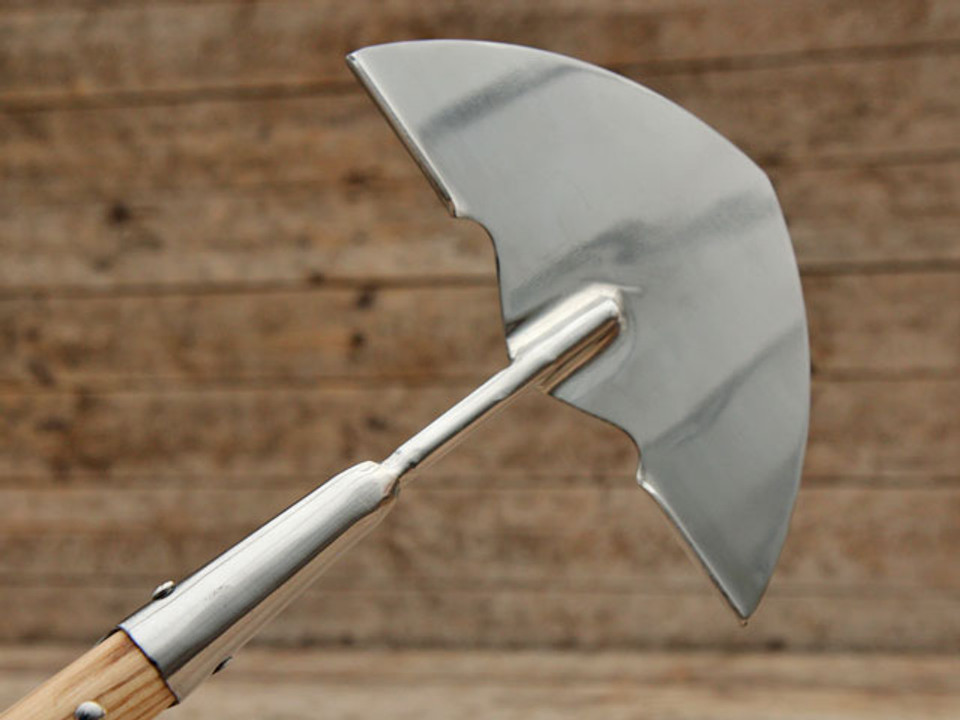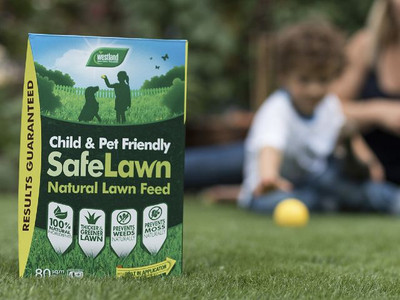Lawn Care Tips

A neat, well-maintained lawn is still considered a cornerstone of an appealing outdoor space. It provides a space for children to play, pets to chase after a ball or stick, or for you to chill in the outdoors. It also lends a nice sense of symmetry to any outdoor space. While our idea of the traditional, manicured lawn is worth reflecting on in an age of increasing scarcity and climate change, a compact lawn will always be a nice way of providing visual contrast and offsetting borders, shrubs and vegetable beds.
Wherever your lawn falls on the spectrum, whether well-groomed or left to grow a little wilder, it will need a certain amount of lawn maintenance and care throughout the year.

Mowing and Biodiversity
A freshly cut lawn might look pleasing to the eye, but it’s not always such a good thing for nature and biodiversity. When lawns are cut short frequently, the native wildflowers that inhabit our lawns don’t get a chance to flower or establish themselves. These flowers are very important food sources for pollinators, who overall have been in a worrying decline in recent decades.
While it’s understandable that people don’t want to let their lawns grow wild or sell their lawnmower, you can make some compromises on this front. Plantlife's ‘No Mow May’ encourages people to allow lawn wildflowers - such as daisies, dandelions or yarrow - to establish themselves at this time of year. These are commonly regarded as weeds in the garden, but provide nectar and pollen for hungry pollinators emerging from hibernation in spring.
You can also set aside a small area of your lawn as a wildflower habitat. Striking a balance between biodiversity support and an aesthetic lawn gives you the best of both worlds, with pollinators and beneficial insects sure to help out in the vegetable garden.

Drought
During prolonged dry spells, lawns will often turn a yellowish or brown colour. This shouldn’t cause unnecessary panic: lawns are resilient and will most likely bounce back once the rain returns. When the blades turn brown this is a defence mechanism to conserve energy and water. If you want your lawn to remain a vibrant green colour in these conditions, you will need to water regularly. This can involve deep watering two or three times a week, ideally early in the morning. However, this isn’t great for the environment, especially as water supplies will already be under pressure during a drought (and there may be hosepipe bans as well). You can let your lawn become dormant with just occasional watering, but try to minimise foot traffic and disturbance during this spell.
Watering
Using harvested rainwater for lawn irrigation is a good way of conserving water and looking after your lawn at the same time. Depending on how much time and effort you want to spend maintaining the look of your lawn, water consumption can build up. It’s more eco friendly and sustainable to use your own harvested supply than to put extra pressure on the public water supply, especially during times of hot, dry weather. (And that’s not to mention the prospect of water charges if they apply to you).

Garantia Woody Wall Tank 350 litres
View ProductAeration
Aerating is a key part of lawn maintenance. This is where you create small holes or channels in the soil. It has a number of benefits:
- relieves compaction and improves air circulation
- It can also help with water infiltration and nutrient absorption.
- The lawn will be better able to absorb fertilisers and lawn feed. Aeration is often carried out before applying fertiliser.
- It can encourage microbial activity in the soil
Aerating can be done with a standard garden fork, but it’s better done with specialised tools called aerators. These can broadly be separated into two types: spike aerators and core aerators. Within those two types are a range of tools including forks, shoes with spikes. rolling aerators and electrically-powered ones.

Kent & Stowe Stainless Steel Lawn Aerator 4 Prong
View ProductSpike aerators use evenly-spaced solid tines or spikes to pierce the soil. They are more suitable for jobs on small areas, for relieving compaction near the surface and improving water infiltration.
Core aerators instead use hollow spikes to remove small plugs of soil. Core aerators tend to be more expensive, but they will create larger, wider holes and support deeper root systems. They are more effective when dealing with heavily compacted lawns or clay soils.
Aerating need not be an annual task: doing it every 2-4 years should be enough to keep your lawn healthy. The best time for lawn aeration is in early spring or in autumn.

Scarifying
Maybe not quite as exciting as it sounds at first, this is the process of removing organic debris - or ‘thatch’ - from the lawn. Thatch includes things like leaves, branches and dead grass. This material can build up and accumulate between grass blades and the underlying soil, especially in autumn or spring. An excessive amount of thatch can block airflow or interfere with water and nutrient absorption. It also runs the risk of inviting the spread of disease or moss.
A spring-tined rake is a handy tool for this task, but mechanical and electric scarifiers are also available. The latter look suspiciously like lawnmowers, but rest assured that they are designed to cut through and lift thatch efficiently. Some scarifiers have settings that can be adjusted according to how much material needs to be cleared. Being too overzealous with scarifying can create bare patches, while it's also important to avoid doing it at the wrong time of year (e.g. winter), when the lawn will have less ability to recover.

Greenman Lawn Rake Stainless Steel
View ProductLawn Repair
From time to time, lawn repair may be necessary to deal with issues like bare patches, sparse edges, or dips and bumps in the surface. Bare patches can be tackled by using lawn seed or by re turfing.
Lawn Seed: Lawn seed is quick and easy to use, but it can take up to a few months for the new grass to fully grow and cover up the bare patches. Seeding is a great option for small, scattered bare patches and modestly-sized gardens. With seed you have a greater variety of cultivars to choose from compared to re turfing. It’s also a much more affordable solution.
Seeded areas should be watered until established, unless you’re expecting some decent rainfall. You also need to keep the area clear of foot traffic as much as possible while you wait for the area to renew.

Gro-Sure Smart Lawn Seed Fast Start - 40sq.m.
View ProductRe-Turfing: Re turfing is where you lay down pre-grown grass, which is often referred to as sod or turf. This can be an expensive option, but it does lead to instant results and a uniform appearance. There is also less chance of weed infiltration with this method. Although most lawns can be repaired through seeding and patience, re-turfing can seem like the better option when you’re dealing with extensive bare patches covering a large area. The soil should be carefully prepared before laying down new sod. A sod cutter can be used to remove the old turf. When the underlying soil has been levelled and firmed, the new turf can be applied. Thoroughly water the newly-laid turf at first, before gradually reducing the watering schedule as the lawn establishes.
Lawn Edging
Lawn edging is a method of keeping the borders of your lawn looking neat and tidy, or emphasising the contrast between your lawn and the surrounding shrubbery, walkways or borders in your garden.
There are some handy garden tools that are designed for this purpose and can help you achieve a professional-looking aesthetic. Tools with curved edges will be more versatile when it comes to how you want your lawn to look. ‘Half moon’ edging tools are named after their semi-spherical shape, and are very effective for creating straight lines or gentle curves. Long-handled edging shears can be used, and are particularly useful for those of us with a bad back. Many garden strimmers will also feature a special setting for edging.

Greenman Stainless Steel Edging Iron - E0452
View ProductAnother option is decorative edging made from stainless steel, metal, plastic or other materials: as well as keeping things neat and tidy, these serve to add a touch of visual flair to your outdoors. Alternatively, a range of materials can be utilised in a more functional manner, such as bricks, concrete paving stones, or even spare mosaic tiles.
To plan your edging layout, mark off your desired lines with some string or twine; you can even use a garden hose to experiment with curved or semi-circular lines.

Scalloped Landscape Garden Edging
View ProductLawn Feed
Lawn feed can be added to provide nutrients and foster a lusher, greener or more drought-resistant lawn. A good lawn feed can revive tired-looking grass and stimulate root growth. Organic lawn fertilisers are slow-release, resulting in a more sustained long-term feed and no chemical runoff. It’s important to choose a lawn feed that is safe for children, pets and wildlife. The best time to apply is in moist conditions or just before it rains.

Safelawn Child & Pet Friendly Lawn Feed - 80sq.m.
View ProductWeeding
When weeding, keep in mind that a lot of garden weeds are actually very good food sources for pollinators or habitats for beneficial insects. Manual hand weeding is always best; using chemical weedkiller can cause harm to insects, birds, biodiversity, even family pets.




